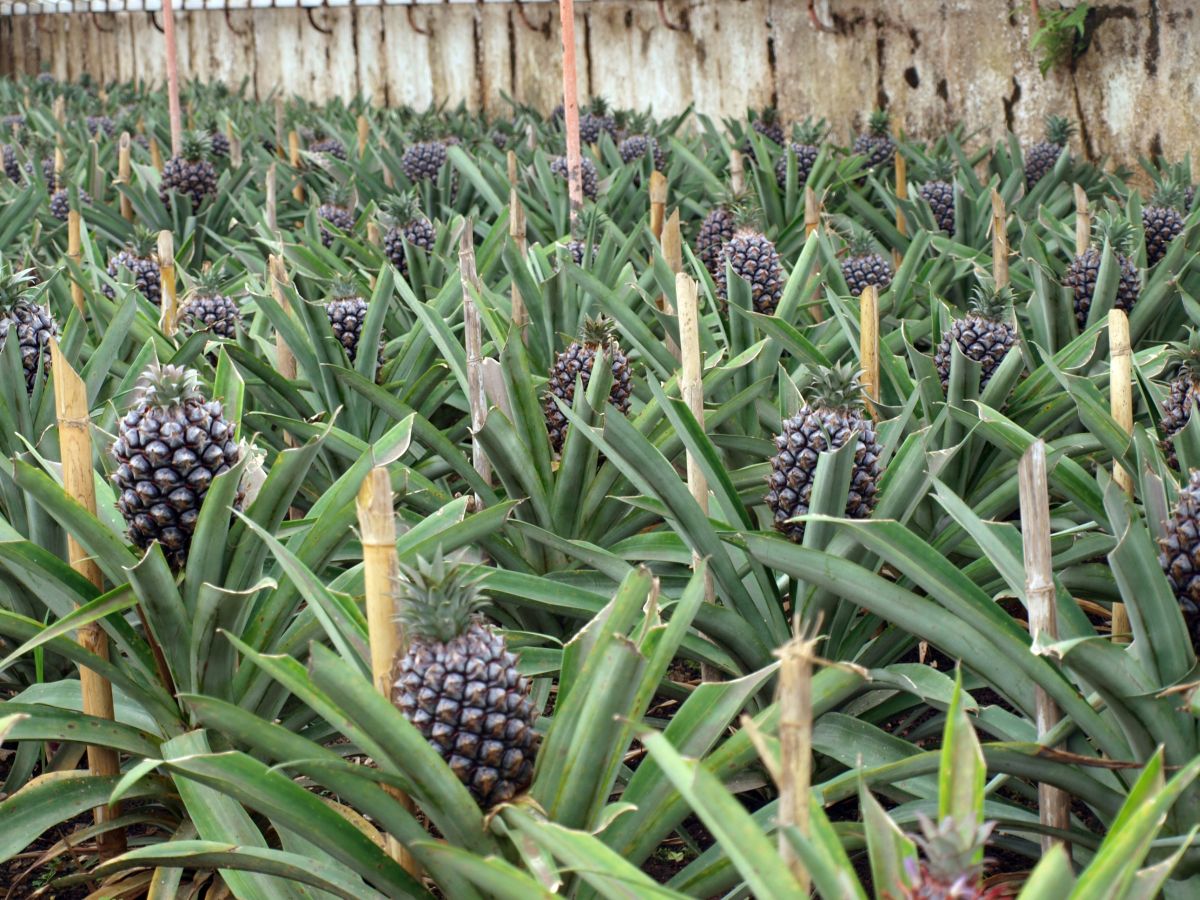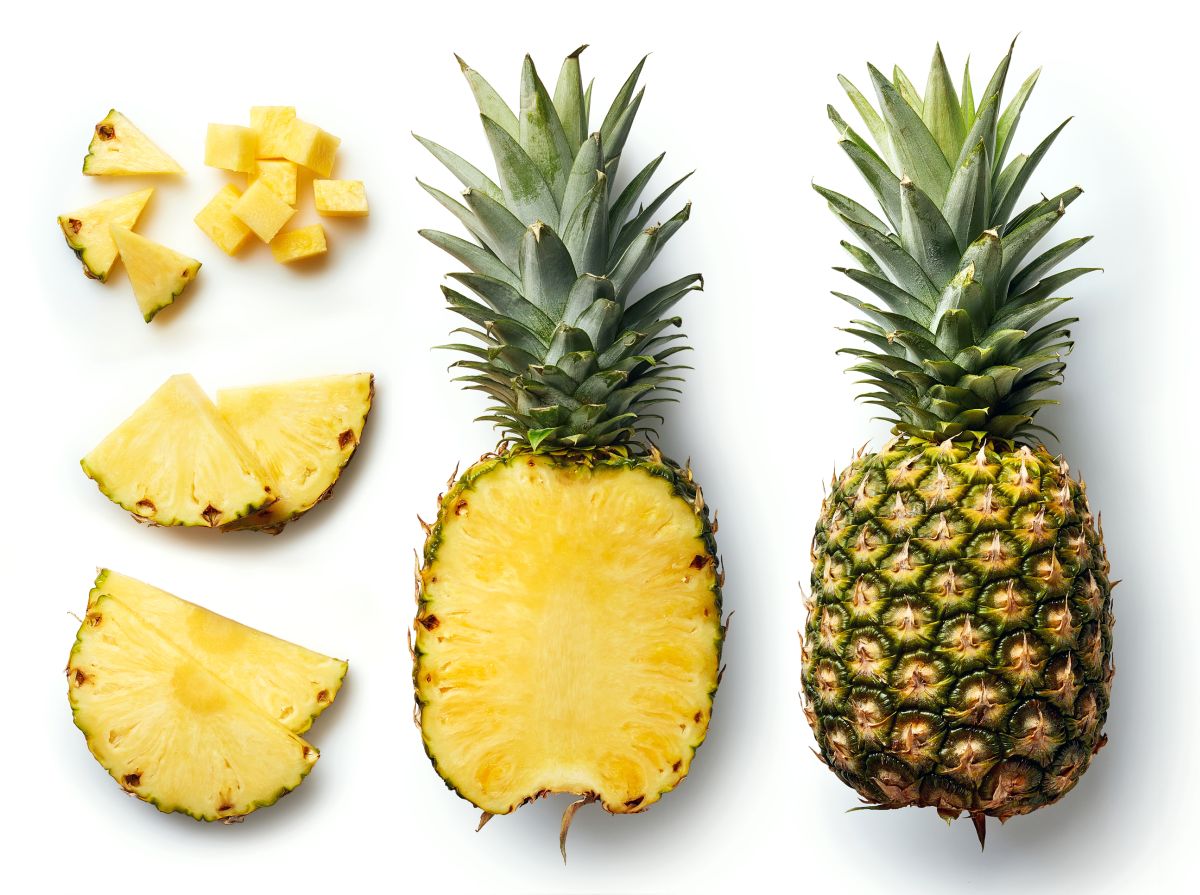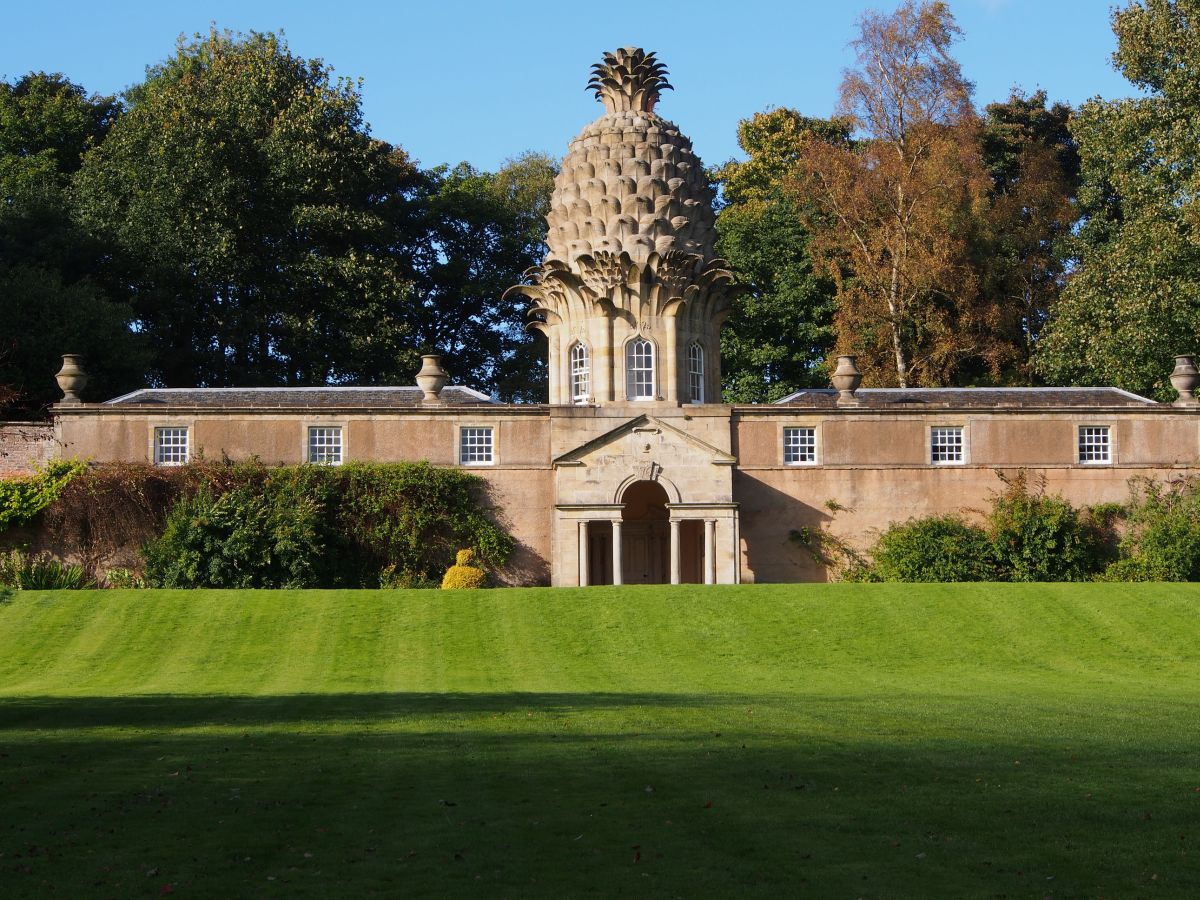
When the first Europeans tasted pineapple, they were amazed not only by how it looked, but especially by how good it was. The tropical miracle stirred passions, and the fruit was so expensive and perishable that few people had to eat it. In the article, you can read in detail the history of pineapple in Europe, how people tried to grow it and how others made money from the desire of those who just wanted to rent it to show off to their friends.
A sweet find in Guadeloupe
Pineapple was nicknamed the “king of fruits” and until the beginning of the 20th century, when canning became widespread, it was a luxury in Europe.
When the pineapple arrived in Europe, the appearance of this strangely shaped, but very aromatic and juicy fruit caused a sensation. The very rich began growing pineapples in so-called “greenhouses,” houses heated to maintain high temperatures, but these temperatures could only be reached at exorbitant costs.

Photo credit Antonio1962, Dreamstime.com
After 1650, an attempt was made to grow pineapples in so-called greenhouses—greenhouses where oranges and lemons were kept in winter to protect them from frost—but this failed because there was not enough heat and light.
The history of pineapple goes back centuries
Pineapples were first cultivated by some indigenous tribes in Central and South America and arrived in Spain in the early 16th century, probably brought by the people of Christopher Columbus. European traders took the pineapple to Africa and Asia, where it could be successfully cultivated. The plant has long leaves and a short stem.
This fruit was probably cultivated by Native Americans for more than a millennium, and this hypothesis is supported by the fact that the species discovered by the Spanish in the Caribbean were seedless, which meant that the plant’s reproduction had depended on humans for so long that it gave up this position.
During a second expedition to Central America in 1493, Columbus and his men are said to have encountered several types of tropical fruit on the Caribbean island of Guadeloupe, including a pineapple that was oddly shaped and extremely tasty.
A fruit that helps you show that you have become a man
The fruit was highly valued by the indigenous inhabitants of the Caribbean islands. They hung carved pineapple crowns over their huts to welcome their guests and planted thick hedges of the plant around their villages so that the sharp-edged leaves would deter intruders.

Photo source Baibaz, Dreamstime.com
Also, one of the coming-of-age rituals of Caribbean boys involved running through pineapple bushes, silently suffering bloody scratches from the plant’s leaves.
It is believed that this fruit first grew wild in the interior of present-day Brazil and Paraguay. The Indians transported the pineapple, cultivated it, traded it and used it in various rituals. It is certain that they really liked the taste, but they also made a kind of wine from it.
Legend has it that the fruit got the English name “pineapple” because it resembled a large pine cone, and it tasted a bit like an apple, which is why the name “pineapple” appeared. Pineapple is formed by the connection of numerous small fruits, strongly compressed, forming the likeness of a large cone. The Spanish called it “pina”.
The name “pineapple” comes from the language of the indigenous people of the Brazilian coast, the Tupi tribe, in whose language “nanas” meant “wonderful fruit.”
This tropical fruit became a sensation in Europe not only because of its taste, but also because of its special shape, and it must be taken into account that 400-500 years ago sugar was very expensive and the variety of sweets was extremely limited.

Photo source Silviaanestikova, Dreamstime.com
When the first Europeans tasted pineapple, it was the best they had ever tasted. Some people ate it with steak or fish, architects liked the shape, so many pineapple-shaped ornaments from wood, metal or stone appeared in front of houses or on walls.
Pineapple and Europeans
Pineapple first came to Spain, and around 1616 it arrived in Italy, where it was first tried to grow it in greenhouses, but without success. Then the fruits got to Holland and England
It is said that the “sun king” – Louis XIV, wanted to taste a pineapple so much that he snatched the unpeeled fruit from the hands of the royal gardener and bit it hard, bleeding with his teeth into the knotty skin.
The roads to Europe were extremely long, and pineapples often spoiled, making those that survived even more expensive. According to some estimates, a pineapple fruit could cost the equivalent of $8,000 today in the 18th century.

Photo credit: Rosemary Buffoni, Dreamstime.com
In England and other parts of Western Europe, pineapples also became a symbol of wealth: many kept them and displayed them at meetings and parties simply to show that they could afford such a luxury. In addition, in the 17th century, those who could not afford to buy a pineapple, but wanted to impress their guests, could rent a pineapple for a day. Sometimes sailors or merchants returning from long distances placed pineapples in front of the house to show that they had returned from exotic travels.
Pineapple was too valuable to eat, it was a symbol of prestige.
A pineapple lover noted several centuries ago: “it has a wonderful taste that combines the aroma of melon, strawberry and apple” and is “one of the most delicious fruits in the world.” The taste of this fruit has conquered even the most demanding gourmets.
One chronicler wrote that the fruit was so noble that “the King of kings put a crown on his head, which became a distinctive sign of his nobility.”
In several European countries, for example, in England, after 1650, they tried to grow pineapple. Heated greenhouses were built, but they cost a lot to maintain, equivalent to tens of thousands of dollars each year in modern conditions. Sometimes plants were destroyed by smoke from furnaces, sometimes greenhouses caught fire from poorly constructed furnaces.
In general, it was something too complicated, but after 1720, botanists managed to get pineapple fruit in greenhouses in England, but it was very risky and expensive, especially since the fruit does not come out until the third or fourth year, so the costs were prohibitively high.
“Love is like a pineapple, sweet and uncertain.” (Love is like a pineapple. Sweet and uncertain) is a quote from a Dutch captain named Piet Pietersson.
Where is the pineapple “heaven” and some curiosities
Costa Rica is the world’s largest producer of pineapples, followed by the Philippines, Brazil, Thailand, China and Indonesia. Nigeria and Ghana are the largest African countries for the production of this fruit.
The largest pineapple monument is the house in Scotland The Dunmore Pineapple House, which instead of a roof has a 13-meter pineapple-stone. It was built by a former governor of Virginia who returned to Scotland in 1776.
It is believed that the tastiest pineapple is in Hawaii, a variety called “sugar head”, where the spine is also edible and where the sourness is not felt in the mouth. A perfect copy can cost $30. The Hawaiian Islands have a tradition of growing pineapples, which first arrived on the islands in 1777, brought by Captain James Cook. Cultivation here began at the end of the 19th century, and canning in industrial quantities began in 1900.
Another famous type of pineapple, locally called “black pineapple”, grows on the island of Antigua and is rarely exported. It is said to be the sweetest pineapple in the world thanks to its nutrient-rich soil, moderate rainfall and abundant sunshine.
The most controversial is the use of pineapple in the so-called “Hawaiian pizza”, invented in Canada by an entrepreneur who left Greece for North America in 1954 and during a stopover in Naples ate pizza for the first time. In his Ontario pizzeria in 1962, he put pineapple compote on a pizza with ham for the first time, and it was a great success. In many places, it is traditionally impossible to put pineapple on pizza.
Thousands of articles have been written about pineapples in pizza, some explaining that it’s okay, and many others saying that it’s not good at all. The most radical say that pineapple on pizza is “a disgrace to humanity.”
Bibliography
Encyclopedia The Story of Food – Illustrated history of everything we eat – DK publishing house.
1000 foods to eat before you die.
The Book of Beginnings (by Charles Panati)
Gastro Obscura – The Culinary Adventurer’s Guide (by Cecily Wong and Dylan Turas)
Cooks Encyclopedia (by Tom Stobart)
Photo: Dreamstime.com
Source: Hot News
Ashley Bailey is a talented author and journalist known for her writing on trending topics. Currently working at 247 news reel, she brings readers fresh perspectives on current issues. With her well-researched and thought-provoking articles, she captures the zeitgeist and stays ahead of the latest trends. Ashley’s writing is a must-read for anyone interested in staying up-to-date with the latest developments.